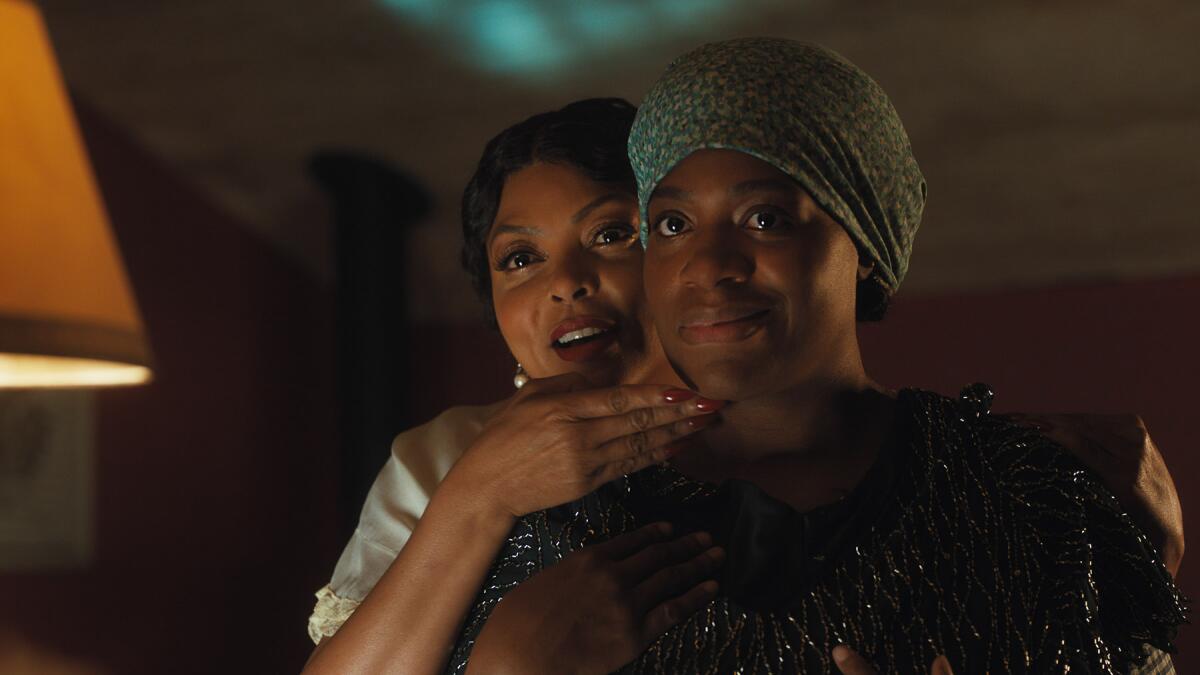While watching “The Color Purple” earlier this month, the audience gasped at the sound of the impact when young Celie, married and arriving at the home of Albert “Mr.” Johnson, was punched in the face for the first time.
It was a brief gasp, but one of the early moments that signaled what Celie would endure for decades to come. But many years have passed since Alice Walker’s book was published in 1982, and the first film was released in 1985, with its gasp-inducing theatrical performance still making many of us wonder what was about to happen.
Films that explore Black communities and stories of violence and trauma come with certain politics. A common question is why don’t more movies and shows explore Black joy? There is also discussion of the graphic nature of the scenes depicting violence, sexual assault, historical realities of slavery, and other suffering experienced by black people. And there’s also the sobering reality that there are many stories about Black history that we don’t yet know and probably never will.
When the first “The Color Purple” movie was released in 1985, starring Whoopi Goldberg, Oprah Winfrey, Margaret Avery, and Danny Glover, prominent black advocates, including the local NAACP Hollywood branch and Beverly Hills branch, He faced severe criticism from the group. The film faced criticism for its portrayal of black men and its potentially devastating effects on black people.
Versions of this argument were seen in the 2009 film Precious, the 2010 film For Colored Girls, and the 2013 film Still Dawn. All films, in and of themselves, explore these depictions, what it means for art to imitate all-too-familiar life, and our willingness to engage at the intersection of trauma and pop culture. It inspired a discussion about how we understand our relationships. Every time a movie or show like this comes out, it’s no matter how important it is in the history of black pop culture, especially if you feel uncomfortable talking about black pop culture. , means holding space for individuals who refuse to watch for their own peace and mental health.
A recent Times article talked about how the new “The Color Purple” is designed to not necessarily overwhelm viewers with the trauma of Celie, played first by Phylicia Pearl Mpathi and then by Fantasia Barrino. Did. The film is full of fun songs, choreography, and lighthearted moments, much like a Broadway musical. However, the film has to be consistent with the original story, in which Celie suffers decades of physical and mental abuse of her own.

At the heart of every version of The Color Purple, including the new film version co-starring Taraji P. Henson, left, as Shug Avery and Fantasia Barrino as Celie, is an important story about black women’s resilience. is presented.
(Warner Bros. Movie)
I was moved by the song and the performance, but for all its joy, the new film The Color Purple has important implications for how we talk about different types of violence against black women. It should be recognized as a cultural reflection. While the depth of this issue has kept it alive in print, screen, and stage for decades, the way intimate partner violence is talked about, researched, and analyzed has also gradually changed. Eleven years after this book was published, the public health community began considering domestic violence as a public health problem according to the data from the 1995-1996 Federal Report. They documented for the first time the incidence and prevalence of intimate partner violence, sexual violence, and stalking. The latest data available from National Intimate Partners and the 2016-2017 Sexual Violence Survey found that nearly 54% of black women said they had experienced sexual violence, physical violence, or stalking by an intimate partner during their lifetime.
This is a sobering statistic and a largely unacknowledged reality of why it’s so difficult to have fruitful conversations about the dynamics that Black women face in domestic violence. At the heart of The Color Purple’s depictions in books, plays, and films, they present an important story about Black women’s resilience. Resilience is a muscle that takes time to develop, both individually and collectively. But recovery also requires consideration of reality. The reality here is that we still don’t know much about intimate partner violence, what it looks like, who it can happen to, and how to get out of an abusive relationship. It’s just that you’re having a hard time talking about what’s supposed to be an easy task. To truly understand Celie’s path to freedom, whether you read or watch it, you must witness and stand by the unpleasant and complex truths about the harm she endured. Another reality is that resilience alone is not always enough for Black women to overcome the challenges of social, systemic, and institutional misogyny.
The experiences of black women survivors of domestic violence are portrayed not only in terms of hope but also in the weight of the reality that their experiences are ignored. Additionally, evaluating the 1985 film and his 2023 film also means appreciating the work done by black actors and actresses to bring Walker’s work to life. It’s not just the talented acting, but also the willingness and courage of each cast member to immerse themselves in the dark side of this material that reflects the human weight of abuse and violence. We especially see that in Barrino, who has played Celie before and is also a sexual assault survivor.
When Glover and Colman Domingo utter the lines “You’re black, you’re poor, you’re ugly, you’re a woman” in the movie, it emphasizes all of the emotional and mental abuse that Celie has undergone. did. The specific manipulations that often prevent Black women from leaving abusive relationships. That includes being told that you can’t afford to retire and that no one in the world wants to retire. The cruelty of this line retains an indelible resonance even after it first appeared in this book 41 years ago. These tactics (isolation, economic dependence, physical violence) are still used by abusers today to prevent women from leaving their homes.
For all the music and joy in the new film, even in 2023, whether we know it or not, we all know or are close to a Black woman like Celie. We must not forget the fact that we are in For every single Celie who “overcame obstacles to her freedom” due to domestic violence, there are black women who have lost their lives trying to do the same. Without the courage to talk about how modern-day domestic violence happens and our role as a collective to prevent or stop it before it’s too late, we can’t help but think of Celie’s story in the movie remake.





